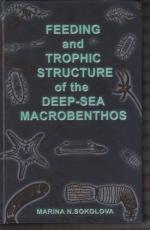|
This section contains 373 words (approx. 2 pages at 300 words per page) |
The so-called "ten percent law," also often called the "law of tens" refers to the idea that at each transfer of energy through a trophic structure, only a small percent of the energy remains available for use by the organism in the next level up in the system. The majority of the energy is lost to the surroundings in forms such as waste heat. Trophic structure refers to what is often called the food chain or food web, wherein green plants (the producer level) capture energy from the sun through the process of photosynthesis and transform it into energy available to other living organisms (the consumer levels).
The ten percent law suggests or implies that exactly 90% of the energy is lost in the transfer at each trophic level, and that only 10% is passed on as useable biological energy. That implied preciseness is misleading, however, and is one of the reasons that many scientists discount the concept, even label it a myth. Instead, it should be considered a rule of thumb, a teaching device, or perhaps best, a mnemonic device that serves as a reminder of the striking inefficiencies of natural systems.
The ten percent law does stand for a real fact of nature: most of the energy available at one level in an ecosystem is lost in the transfer to the next level. A very small percentage of the light energy that reaches the leaf surface of plants is actually assimilated, or turned by photosynthesis into organic compounds. Most of the light energy absorbed by plants is converted directly to heat and lost. Many plant parts are inedible by herbivores (the next trophic level) and is lost for energy transfer. The plants use much of the energy absorbed to live, as do the herbivores that eat them.
Energy lost at each level results in a pyramid of biomass: less energy available at the level of carnivores, for example, means less biomass at that level than at the level of herbivores. The growth and numbers of organisms in an ecosystem are closely (if not always directly) related to, and limited by, the amount of energy available, and that decreases markedly at each level of the food/energy system.
|
This section contains 373 words (approx. 2 pages at 300 words per page) |


